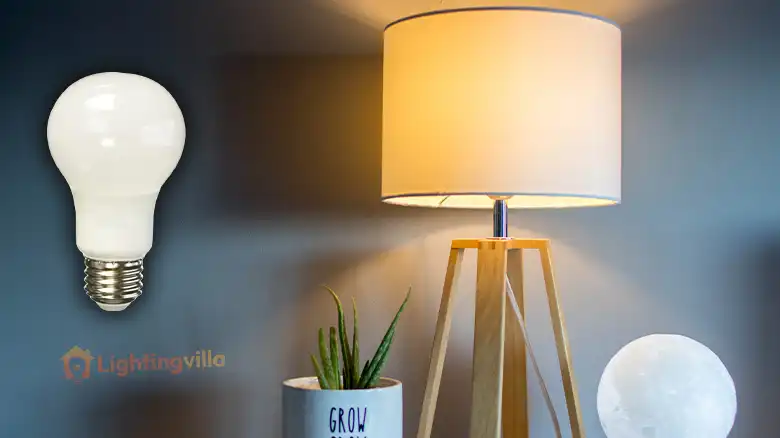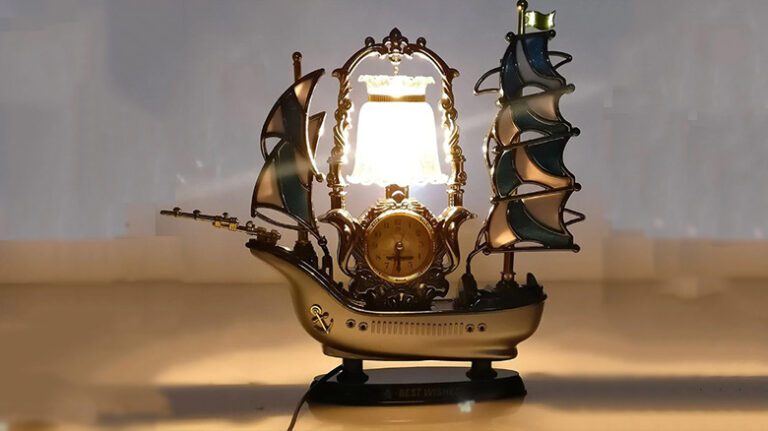Can I Use A 40 Watt Bulb In A 60 Watt Lamp | Is It Possible to Use?
In respect of design and power efficiency, light bulbs have improved considerably. LEDs (light-emitting diodes), CFLs (compact fluorescent lamps), and halogen incandescent bulbs are some of the more modern varieties of light bulbs. You could reduce energy bills by using these lights instead of conventional incandescent ones because they use lesser electricity and last longer.

There are other aspects to consider when choosing a light bulb besides wattage because they impact the brightness, color, and energy consumption. In this article, we will talk about wattage, its importance, and mostly about using light bulbs with less wattage than lamps and vice versa.
Wattage and Brightness
People like to buy bulbs depending on their wattage, believing that this would indicate how brilliant the light they would produce. But that’s not accurate. The wattage, not the brightness, tells a customer how much power the lightbulb needs. For example, a 40-watt bulb can be just as bright as a 100-watt bulb. This is especially important nowadays because modern bulbs use far less electricity, making wattage an unreliable indicator of a bulb’s brightness.
The lumen of a bulb is what consumers should look at to determine how brightly it will shine. Watts represents the energy utilized to light the light bulb, while lumens represent brightness. For instance, a typical 60-watt light bulb emits about 800 lumens. In contrast, a CFL bulb that generates 800 lumens only consumes 15 watts.
Customers should now consider the lumens output rather than the wattage to assess the luminance of a bulb, irrespective of the nature of the bulb or the tech. This is due to the development of energy-efficient light bulbs. Whether a light bulb has an 800-lumen output, it will still be as bright as an LED, CFL, or conventional incandescent bulb.
Watts to Lumens – Power Output to Brightness Produced
Following is a list of conventional watt light bulbs along with their lumen output:
- Light output from a 40-watt bulb is 450 lumens.
- Light output from a 60-watt bulb is 800 lumens (most commonly used in households)
- Light output from a 75-watt bulb is 1,100 lumens.
- A 100-watt bulb produces one thousand six hundred lumens.
- 2600 lumens are produced by a 150-watt light bulb.
These calculations are made using conventional incandescent light bulbs.
Can I Use A 40 Watt Bulb In A 60 Watt Lamp?
Manufacturers’ wattage ratings are disclosed within the component; you just need to know where to look. When you know the wattage rating of your installation, buy a bulb that matches that rating or is less. You’ll be safe if you don’t exceed the manufacturer’s suggested wattage. If your fixture doesn’t specify a recommended wattage, the general rule is to select 60-watt or less bulb.
Ask an electrician to check your electrical system to determine whether you should repair any overlapping faults for greater safety. You might also receive the finest advice for replacing your bulbs from a licensed electrician.
You won’t have a hard time finding a 40-watt bulb to replace your 60-watt lamp. There is no danger other than that your lamp won’t provide as much light as one powered by a 60-watt bulb. Even if the light bulb shines brightest in the specified circumstance, some electricians think installing a lower watt bulb in a greater watt lamp may reduce the lamp’s lifespan. Again, while researching this article, we could not find any such reference.
When customers experience issues with purchasing the incorrect light bulb, it is typically because they did so by choosing a lamp with a higher watt than was recommended. The wattage certification often indicates the maximum wattage on your light socket. In other words, switching to a lower-wattage light bulb shouldn’t be a problem, but switching to a higher-wattage one could result in over-lamping, posing a safety risk for your house.
Over-Lamping the Lamp
You are overlapping when you purchase a light bulb with a wattage that is too much for the electric fixture to support. Suppose you surpass a fixture’s acceptable wattage rating, which the manufacturer sets, and extreme heat will occur. Overlamping can cause various issues, and the longer it continues, the more at risk you and your property are in.
The following are some risks associated with over-lamping:
Overheating
Using a bulb with high wattage can cause the lamp to overheat. The cable insulation and the light socket may melt due to this heat. As soon as that occurs, you face the danger of electrical faults, which could even result in residential fires.
Permanent Damaged Light Fixture
Your light fixture will be permanently harmed by overlamping. Even if you accidentally use a lamp with a high wattage, you should try to correct the error, before it’s too late. It’s likely that already your light fixture is suffering permanent damage. This is why confirming that the light bulb you replaced had the exact wattage requirements is crucial.
Frequently Asked Questions
Can I use a lower-wattage bulb?
Yes, you may always use a lower-wattage bulb in a fixture designed for a higher wattage. It’s fine if the lower-wattage bulb uses less electricity from the fixture and produces less heat. Simply avoid using a higher-wattage bulb in a socket meant for a lower-wattage bulb since doing so would cause the socket to draw more current than intended, which might lead to overheating, the melting of plastic parts, and even a fire.
Can a fire start from a faulty light bulb?
The failure of homeowners to comprehend that the incorrect bulb might burn to wire and create a fire is a typical error. In the event that your family members change a burned-out bulb without your knowledge, especially young children, you should be aware of this and let them know.
Conclusion
Above all other things, your and your family’s safety is the primary concern. So always look out for such small things as checking the wattage before using a bulb in your lamp. Although a lower bulb will not hurt you in a higher wattage lamp, the opposite just might. This is why you should always heed your electrician and let them check your wiring once a year.






